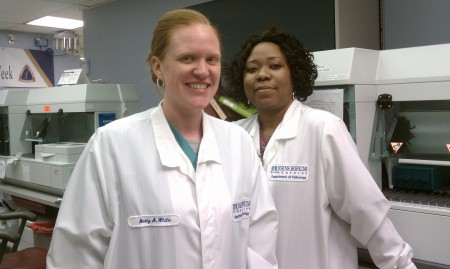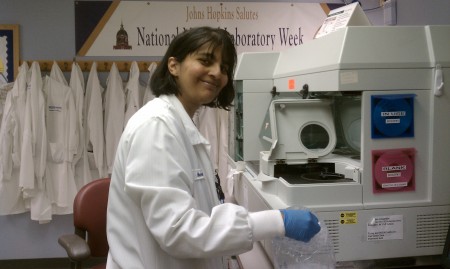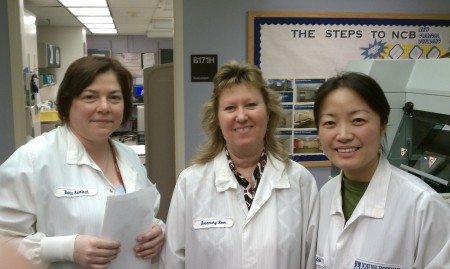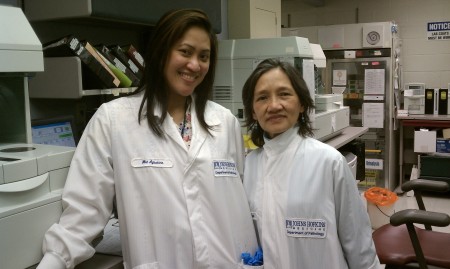Each day in our Coag Lab, hundreds and hundreds of patient samples are tested for heparin therapy monitoring. In spite of this extremely high volume of patient samples and under the close supervision of our management team, our Coag techs work with processors, phlebotomists, and Customer Service to guarantee providers get quality test results within specified turnaround times. We are very proud to say that everyone involved in the process has done a remarkable job.
The tests for heparin monitoring are aPTT (activated partial thromboplastin time) and Hep anti-Xa UFH (Unfractionated Heparin) assays. As a widely accepted standard, the aPTT test measures the heparin concentration in patient samples indirectly through clotting assay. One of the challenges for achieving high quality routine aPTT tests is the tedious quality control work that must be done annually for the new lot of thromboplastin reagent (Actin FSL) prior to its use at the bench. Generally, a heparin titration curve for a new lot of reagent will be determined for the aPTT ranges vs. the therapeutic range of heparin (0.3-0.7 IU/mL). In practice, this study is very labor-intensive and time-consuming even for a good team because it requires a high volume collection of data. In addition, the data analysis and interpretation can be very challenging, considering there are potential outliers in the data set which will skew the data distribution. For example, for a patient who doesn’t have underlying coagulopathy, the aPTT could be 50 seconds when the Hep anti-Xa UFH is 0.3 IU/mL; however, for a patient with a critical illness such as sepsis, liver disease, underlying coagulopathy, or transition to warfarin, it could be 100 seconds or even more.
Recently the Hep anti-Xa UFH using chromagenic assay has drawn a renewed interest due to the advantage of directly measuring heparin concentration in patients. We were committed to establish this test for routine heparin testing in our Coag Lab in 2010, and this test is now available to our Johns Hopkins providers thanks to the significant amount of effort by everyone involved. The biggest advantage of Hep anti-Xa assay for heparin monitoring is that it involves less dosage changes before a patient is stabilized on heparin. So having this test available 24/7 to providers really helps them to provide the best possible care to patients. Right now 99% of specimens meet the TAT (from receipt in the lab to result) specified by the management team along with physicians. This is a tremendous success shared by everyone in the Lab who is involved in the process.
Our Coag Lab also did a lot of studies to help the Hospital to answer the question, “For what type of patients can Hep Anti-Xa UFH be used for heparin monitoring?” Some of these study results will be presented at the May 2011 ISLH (International Symposium on Technological Innovations in Laboratory Hematology) Conference in New Orleans, Louisiana. Since these studies are very important for the Hospital to establish heparin monitoring guidelines for providers, they were done in a timely manner thanks to the teamwork of Coag Lab med techs.
Junnan Chen
Lead Technologist – Coagulation
Core Laboratory
Department of Pathology



